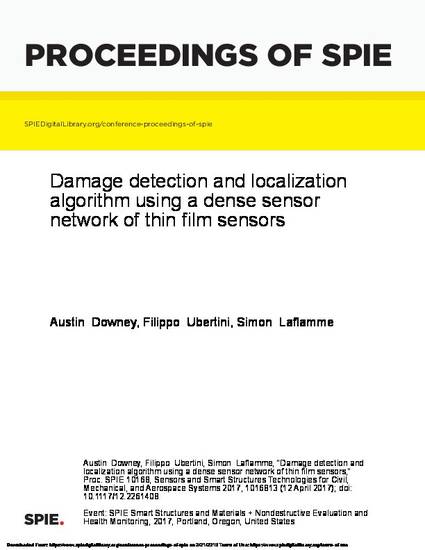
The authors have recently proposed a hybrid dense sensor network consisting of a novel, capacitive-based thin-film electronic sensor for monitoring strain on mesosurfaces and fiber Bragg grating sensors for enforcing boundary conditions on the perimeter of the monitored area. The thin-film sensor monitors local strain over a global area through transducing a change in strain into a change in capacitance. In the case of bidirectional in-plane strain, the sensor output contains the additive measurement of both principal strain components. When combined with the mature technology of fiber Bragg grating sensors, the hybrid dense sensor network shows potential for the monitoring of mesoscale systems. In this paper, we present an algorithm for the detection, quantification, and localization of strain within a hybrid dense sensor network. The algorithm leverages the advantages of a hybrid dense sensor network for the monitoring of large scale systems. The thin film sensor is used to monitor strain over a large area while the fiber Bragg grating sensors are used to enforce the uni-directional strain along the perimeter of the hybrid dense sensor network. Orthogonal strain maps are reconstructed by assuming different bidirectional shape functions and are solved using the least squares estimator to reconstruct the planar strain maps within the hybrid dense sensor network. Error between the estimated strain maps and measured strains is extracted to derive damage detecting features, dependent on the selected shape functions. Results from numerical simulations show good performance of the proposed algorithm.
Available at: http://works.bepress.com/simon_laflamme/75/

This proceeding is published as Austin Downey, Filippo Ubertini, Simon Laflamme, "Damage detection and localization algorithm using a dense sensor network of thin film sensors", Proc. SPIE 10168, Sensors and Smart Structures Technologies for Civil, Mechanical, and Aerospace Systems 2017, 1016813 (12 April 2017); doi: 10.1117/12.2261408. Posted with permission.